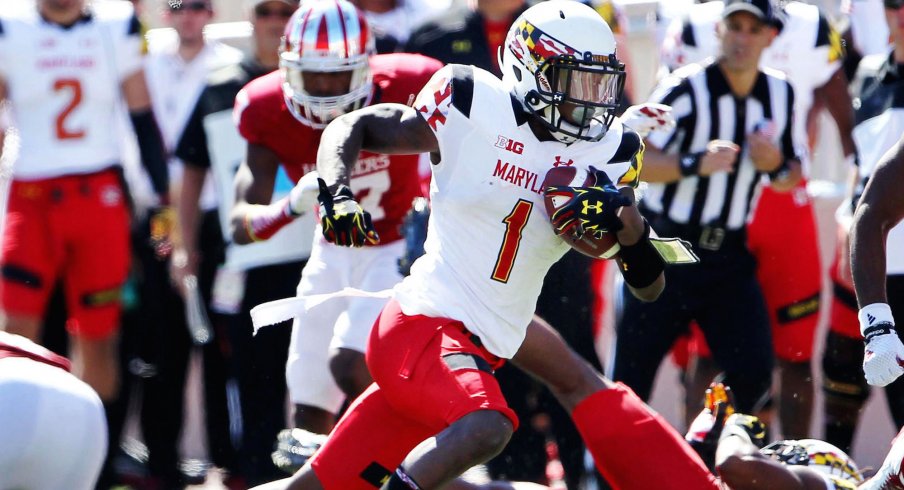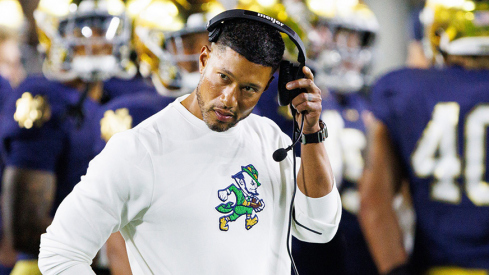Coming into their first Big Ten conference game at home, the Maryland Terrapins have reason to feel good about where they're headed.
With their only loss of the year coming at the hands of rival West Virginia on a last second field goal, the Terps welcome Ohio State to Byrd Stadium with a record of 4-1.
Not only has head coach Randy Edsall's squad been able to pull out wins over Power-5 teams like Syracuse and new Big Ten brother, Indiana, in the process, but the traditionally defensive minded coach's squad has put up big points in the process.
With a number of play-makers on offense, led by dual-threat quarterback C.J. Brown and wide receiver Stefon Diggs, the Terps are averaging 36.8 points-per-game so far in 2014. In contrast, their defense has held opponents to an average of only 19, thanks to an emphasis on causing turnovers and getting to the quarterback.
Undoubtedly, the Terps will emphasize creating big plays against the Buckeyes on both sides of the ball, trying to copy the blueprints created by the Cincinnati offense and Virginia Tech defense. So what might that look like?
Offense
Though Diggs often gets the top billing, the Maryland offense truly centers around Brown. The big quarterback is not only throwing for nearly 200 yards-per-game, but is also the Terps' leading rusher, both in yards and attempts.
But the hits appear to be taking a toll on Brown, who has missed long periods of game time in both the West Virginia and Indiana contests after taking some big hits. Though he is currently listed as the starter on the Maryland depth chart, Edsall has not made Brown's status clear for this weekend's game as he battles a sprained wrist on his non-throwing hand.
If Brown is unable to go, the Terps will turn to Junior Caleb Rowe, a more traditional pocket passer who has seen a decent amount of action throughout his career, throwing for nearly 1,600 yards and 11 touchdowns during the 12 games in which he has appeared. However Rowe does not offer the same running threat as Brown, and the Terps' ground game struggles to get going when he is in the game.
Regardless of who is taking the snap, the Terps most commonly operate out of "11" personnel, meaning one running back and one tight end, with the quarterback in the shotgun or pistol.
Though the Terps will try to get the running game going with the tight zone inside, their most effective running play has easily been the speed option to the outside. Nearly all of the big runs from running backs Brandon Ross (#45) and Wes Brown (#4) have come from getting the ball on the edge with this play.
The Terps will run it from multiple formations, often calling it when defenses aren't playing their cornerback up on the line of scrimmage, as seen below.
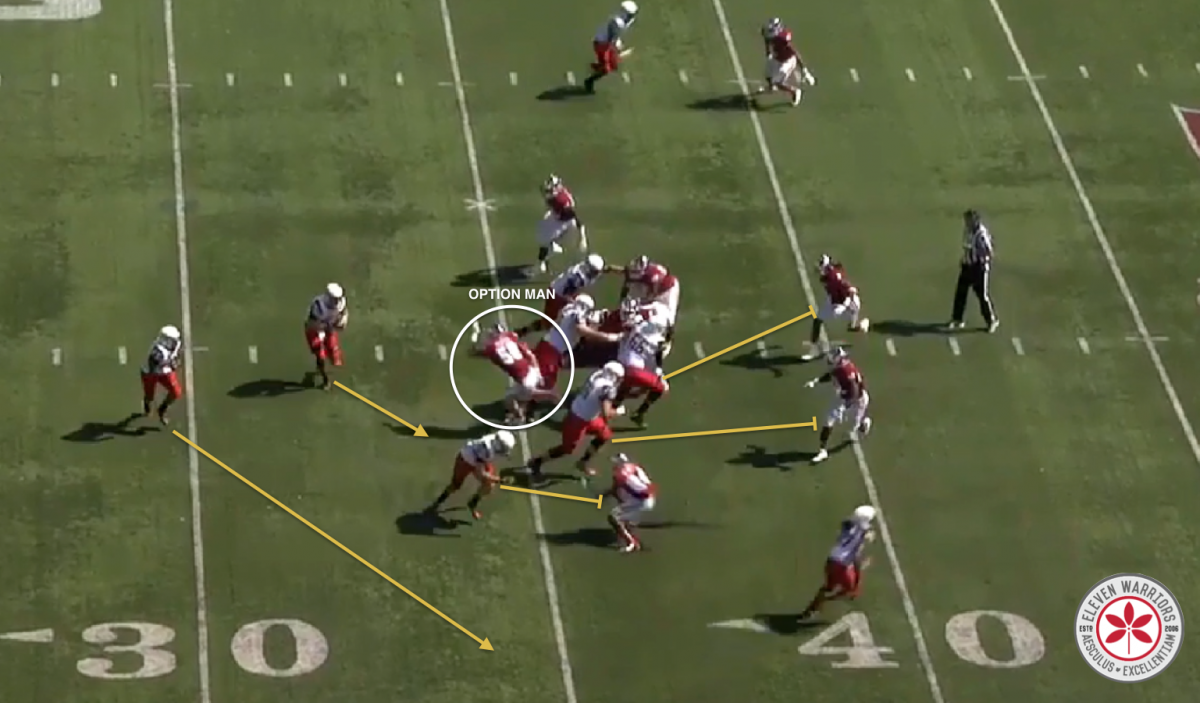
The Terps are able to gain a numerical blocking advantage by leaving the defensive end unblocked and allowed to come upfield, and acting as the option man for the QB. His immediate instinct is to go right for the ball-carrier coming straight toward him, which allows for an easy pitch. The running back needs to simply turn the corner and head upfield, often picking up big chunks of yardage in the process.
Against a smaller, quicker team like Indiana, the Terps tried to simply out-muscle their opponents, getting in the I-formation and running old school lead plays with a fullback. They'll also get into the Diamond pistol set fairly regularly, and will run a multitude of different lead, counter, and option running plays, followed by play-action passes to the fullbacks and tight end to keep defenses more off balance.
When they've struggled to move the ball on the ground, Maryland will pull out one of the deeper screen packages the Buckeyes will see this year. While, like Cincinnati, the Terps call a great deal of wide receiver screens, they also get their running backs heavily involved.
Offensive coordinator Mike Locksley will call screens in any situation, and it's clear that the Terps make these concepts a priority in practice. One such example came against West Virginia, when Ross appeared to be blocking a blitzing defensive end before releasing down the middle of the field for a screen pass, where he had two lead blockers in the form of the left guard and tackle.

But by getting into bigger formations, the Terps have a much harder time getting the ball to their biggest weapon, receiver Stefon Diggs. The Junior was recruited heavily by the Buckeyes, and it's clear why he was the center of so much attention.
Few receivers in the country are as dynamic in the open field, and the Maryland coaching staff has made it a priority to get him touches. Though he leads the Terps in catches and yards, few of his receptions come down the field. He too is regularly involved in the screen game, but the majority of his catches come from the "quick" game.
The Terps lack much of a specific identity on offense, but they turn to the quick game when the rest of the offense starts stalling. As the name implies, the goal is to get the ball into the receiver's hands as fast as possible, and is a direct descendent of the classic 3-step-drop offenses of Bill Walsh.
To properly execute quick game concepts, coaches preach three keys:
- Aggressive blocks from the line with a strong punch to keep defenders from getting their hands up, as throws are coming out as line drives
- Crisp routes from the receivers that all appear the same after three steps
- Quick decisions and strong mechanics from the quarterback, as they have very small windows in which to throw
To take get the ball to Diggs, the Terps like to call two classic "quick" schemes. Often lining up in a four-receiver set, Diggs usually aligns as the inside receiver to the weak side, or in the case of OSU, away from SAM linebacker Darron Lee.
Diggs has a natural hole in the defense to exploit, as the safety and linebacker responsible for that area have a long way to go on short routes, such as when the Terps call the double slants concept to his side.
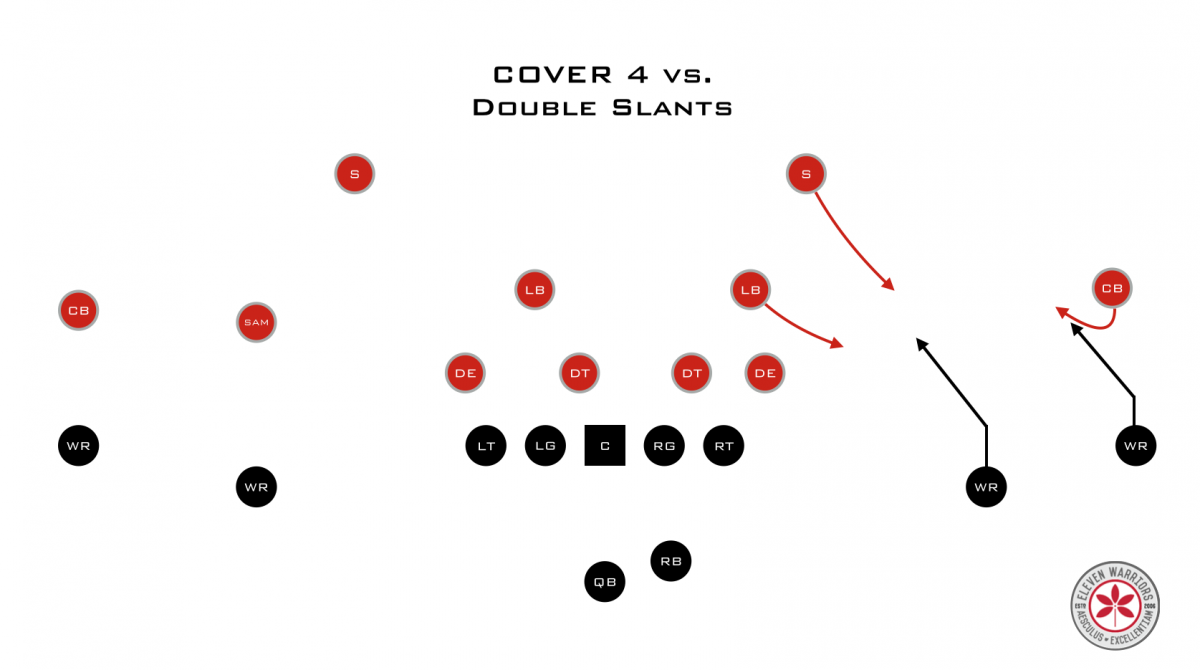
Against another quick game staple, the fade/out combination, the safety and linebacker have even further to travel, as the cornerback takes the outside receiver who is running the deep vertical fade route, leaving Diggs with plenty of room to make the catch on the out route and turn upfield.
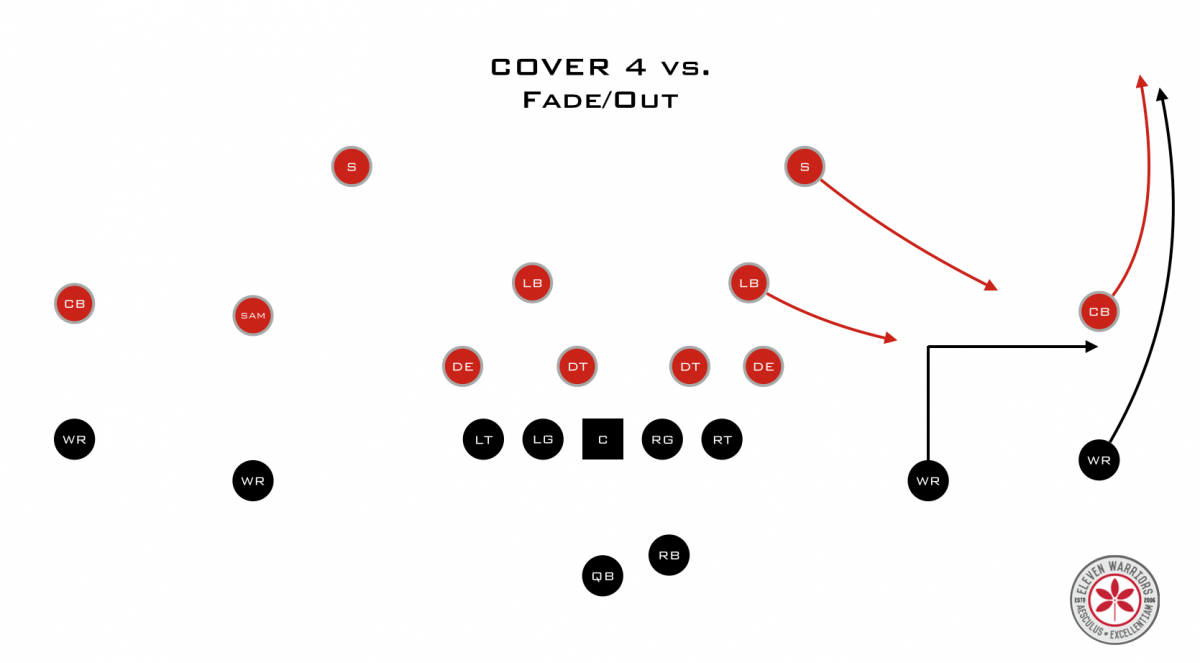
Defenses can't just over-play Diggs in the slot either, as wide-outs Deon Long (#6) and Marcus Leak (#82) are more than capable of making plays themselves, especially once they get the ball in their hands.
When facing long passing situations, the Terps have struggled, as Brown lacks the arm strength and discipline to make many plays down the field, often trying to fit the ball into double coverage. The biggest plays through the air thus far for Maryland have mostly been thanks to breakdowns in coverage, such as completely forgetting to cover Diggs as he runs down the middle of the field.
But overall, there are very few things that the Buckeye defense will be seeing for the first time. Although the Silver Bullets gave up some big plays against Cincinnati, the problems are not systemic, and are fixable with more repetitions.
Luckily, offenses like Maryland's give them those reps, and as long as they're able to stay sound in fundamentals, like taking proper angles once players like Diggs get the ball in space, the Buckeye defense should be able to keep the Terrapins under wraps.
Defense
As many would expect from former NFL defensive backs coach like Edsall, the Maryland defense is complex in both alignment and scheme. Though they most commonly operate out of the same basic front, the Terps will show quite a few more coverages behind it than the average college secondary.
The Terrapins' base defense is technically a 3-4 defense in name, but operates like 4-man front with WILL linebackers Yannik Cudjoe-Virgil (#51) and Yannick Ngakoue (#7) playing the role of a stand-up defensive end. Additionally, the SAM linebackers, Matt Robinson (#40) and Jalen Brooks (#43) often line up over the slot, much like Lee does for the Buckeyes.
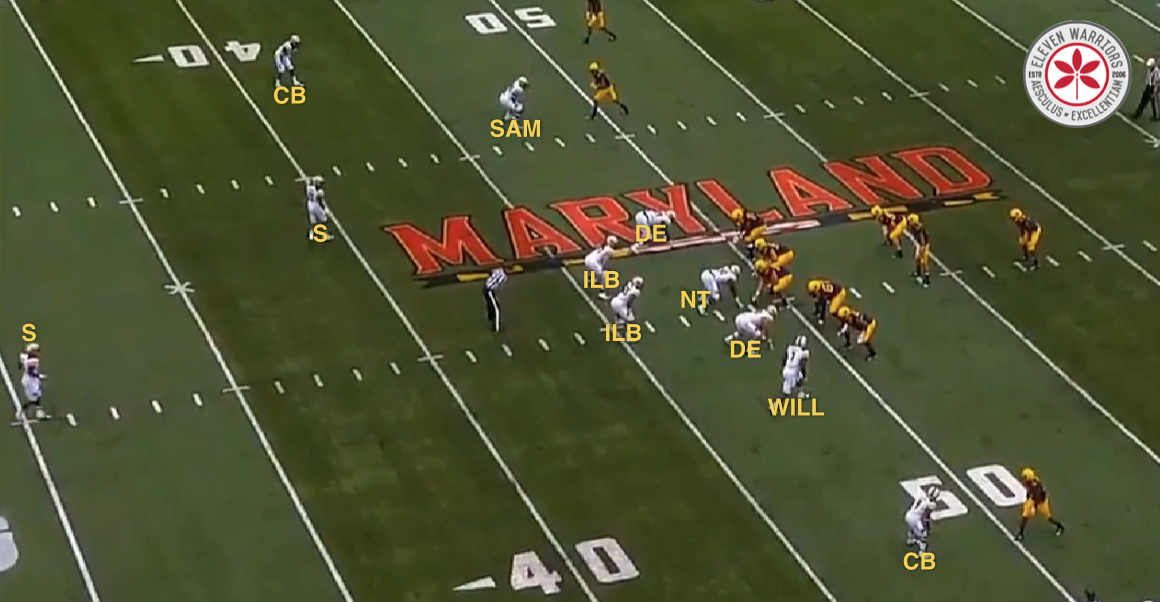
In the secondary, the Terps will call often start games in a cover four look like the Buckeyes. But they'll switch things up, especially on third downs, where they've been known to use a lot of cover one and man-two coverages, something that has given Ohio State receivers problems for the past two seasons.
By mixing up their coverages so often, the Terps have been able to cause confusion for opposing quarterbacks, which have led to six interceptions in their first five games. But these aggressive schemes have also come back to bite them.
In this example against West Virginia, the Mountaineers called a simple wide receiver screen to free up the outside receiver.
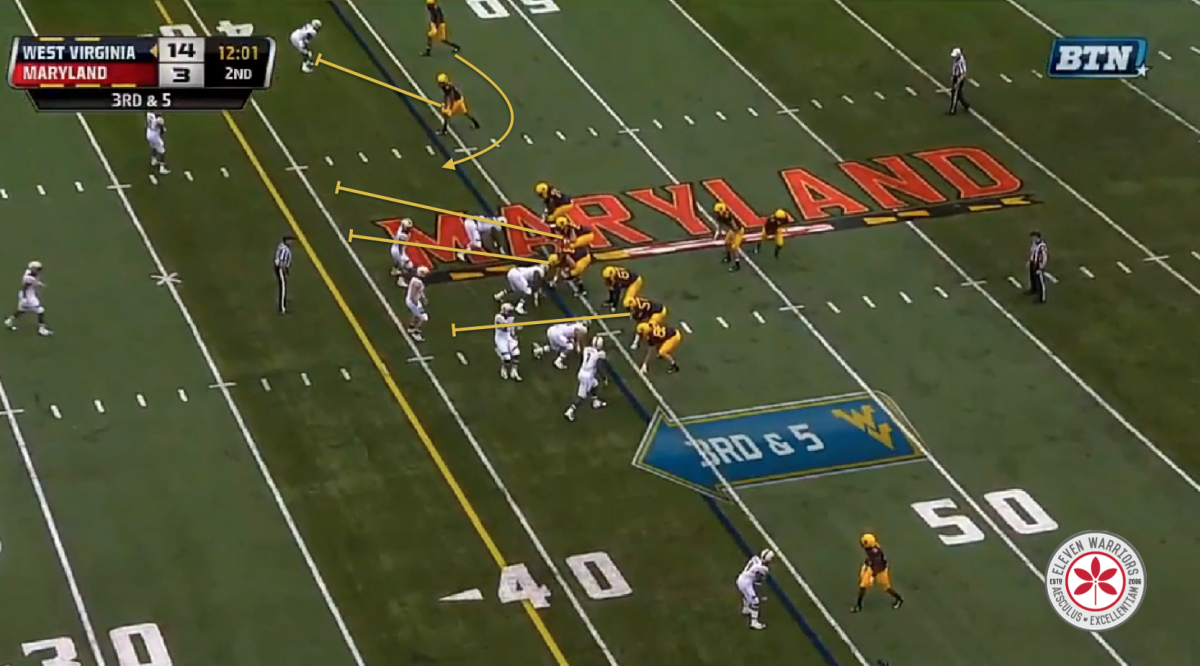
But as the Maryland defenders keep their eyes on their assigned receiver in the man-to-man scheme, they don't see the blockers coming toward them to take them out of the play, leaving a huge gap for the receiver to catch and run.
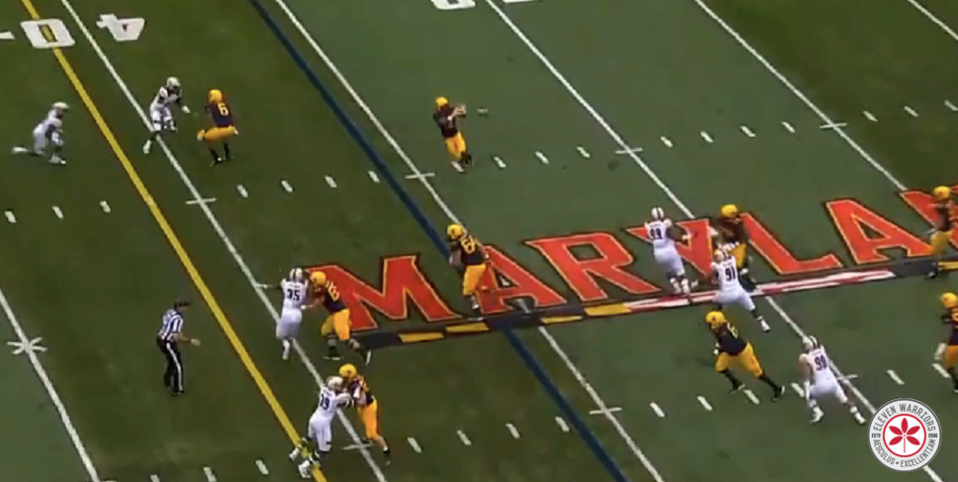
Thanks to some good downfield blocking and poor angles from the Terrapin defensive backfield, the West Virginia receiver turned that short catch into a touchdown.
Such plays were the backbone of a West Virginia game-plan that gashed the Terps for over 500 passing yards. While the Buckeyes probably won't hit that number, the door is open to continue J.T. Barrett's streak of 300-yard passing games.
The front seven for the Terps have had similar problems stopping the run, as they're giving up over 200 yards-per-game on the ground. Without great talent on the defensive line, Edsall has tried to substitute scheme for talent, something that rarely works in that part of the field. Coming off their best rushing performance of the year, one can surmise that the Buckeyes will try to keep that momentum going against a lackluster rushing defense.
Maryland's rushing defense is a little more athletic than the one the Buckeyes saw from Cincinnati, but it lacks the playmakers that Virginia Tech brought to town. As the Buckeye offensive line continues to round into fine form, players like linebacker Cole Farrand (#47), the leading Terp tackler, should expect to see the Buckeyes simplify their run scheme to counter the multiple looks from the Terps.
We shouldn't be surprised if the Terps try to break out different schemes this week to stop the Buckeyes, such as a Bear front or even more press coverage. However, the OSU offense has shown since the Virginia Tech game that they're ready to take on those schemes much more than they were in the past, both by refinements in scheme and player development.
With so many schemes in play though, the Maryland defense can easily be victimized by a hurry up, no-huddle scheme. By not being particularly great at any one concept, they're forced to look to the sidelines every play and wait for the coaching staff for the play, which often doesn't make it's way across the field to all 11 players when the offense is moving quickly.
Hyperbole aside, the Maryland defense holds few clear answers for stopping the Buckeyes. Their game-plan will probably start with the corners trying to shut down the Buckeye receivers, but with Barrett consistently looking for the running backs out of the backfield, that plan will run out of gas pretty quickly as the Terp linebackers don't stand much chance of chasing down Ezekiel Elliott or Curtis Samuel.
The challenge for the Buckeyes is whether they can continue to keep both the run and the pass games moving as well as they have against Kent State and Cincinnati. This matchup gives the Buckeye wide-outs a chance to prove they can beat press-coverage, something that will pay great dividends down the line.
The Terps aren't a bad team, and should end up in the top half of a lackluster Big Ten. But they aren't ready to compete for the conference title quite yet, and last week's win over Indiana was just that - a win over Indiana. The Buckeyes bring a much bigger challenge to Byrd Stadium Saturday. Are they up to the task?
